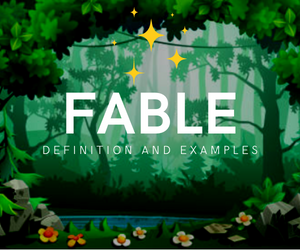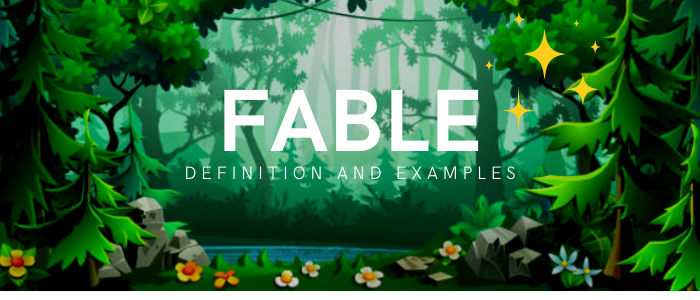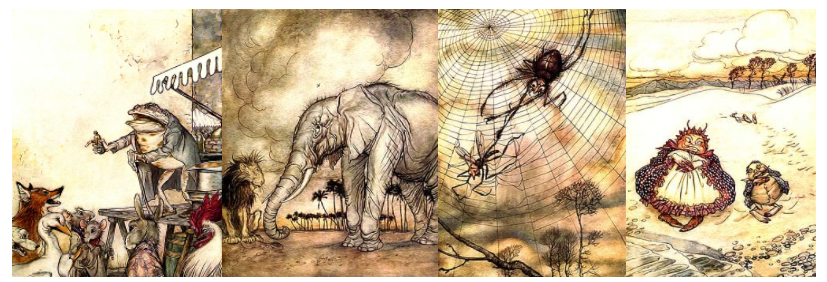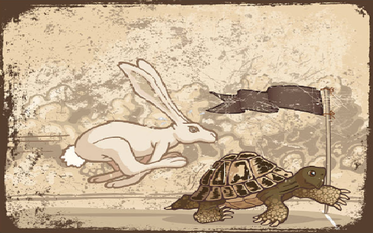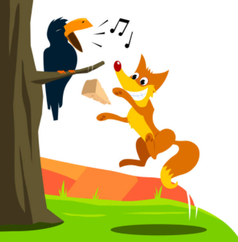The word “fable” comes from the Latin “fabula,” or “story.” A person who writes fables is a fabulist.
The most famous fables in the world are Aesop's Fables. Aesop was an Ancient Greek storyteller and his fables have been gathered across the centuries in a variety of languages in a storytelling tradition that continues to this day.
Fables were probably used by medieval troubadours, musicians, bards and poets to orally transmit their stories to the people. It's one of the forms of folk literature most used throughout history. Several colloquial phrases are derived from fables, such as “A wolf in sheep’s clothing” and “A bird in the hand is worth two in the bush.”
- The Fox and the Grapes - "It’s easy to despise what you cannot have."
- The Tortoise and the Hare - “Slow and steady wins the race.”
- The Lion and the Mouse - "A kindness is never wasted."
- The Ant and the Grasshopper - "There’s a time for work and a time for play."
- The Crow and the Pitcher - "Don’t give up at the first sign of failure. In fact, never give up!"
- The Wolf in Sheep's Clothing - "Do not assume or judge things based on appearance."
- The Fox and the Crow - "Never fall for flattering words."
- The Dog and his Reflection - "Greed can lead to costly foolish behavior."
- The Town Mouse and Country Mouse - "Better beans and bacon in peace than cakes and ale in fear".
- The Boy who cried Wolf - "There is no believing a liar, even when he speaks the truth."
- The Wolf and the Crane - "You should help only who deserves it."
- The North Wind and the Sun - "Kindness effects more than severity."
- The Gnat and the Bull - "We are often of greater importance in our own eyes than in the eyes of our neighbor."
- The Goose and the Golden Egg - "Those who have plenty want more and so lose all they have."
- The Hawk and The Nightingale - "“A bird in the hand is worth two in the bush.”
- It's a short story that involves fantasy elements.
- It can be in verse or prose.
- It's aimed at children.
- It's generally written in third person, which means that the narrator is not a character in the story.
- The setting can be anywhere.
- The plot of a fable includes an exposition, a simple conflict and a resolution.
- It usually has no more than two or three characters.
- It usually features animals that behave and speak as human beings. They have strengths and weaknesses.
- Some animals have specific traits associated with them. For example, an owl is wise, a fox is cunning, and a lion is brave.
- It has funny, familiar and humorous tones, using mostly satire to criticize behaviors.
- The moral lesson is revealed at the end to teach readers something about life.
- The fable exposes the dangers of vices and antisocial attitudes, such as greed, envy, lack of empathy, pride, greed, excess self-confidence, etc.
